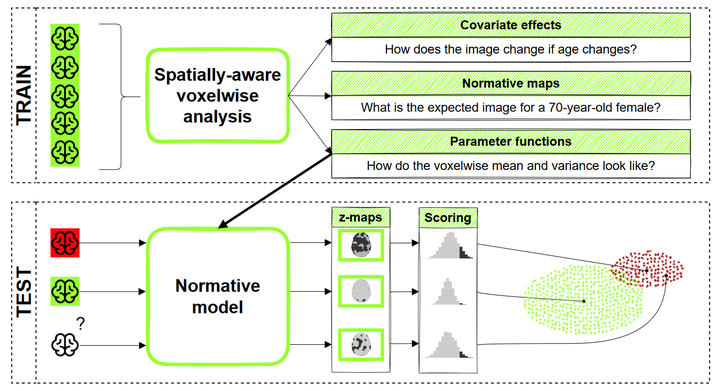Smooth normative brain mapping of 3-dimensional morphometry imaging data using skew-normal regression
 Image from NormMap paper
Image from NormMap paper
Abstract
Tensor-based morphometry (TBM) aims at showing local differences in brain volumes with respect to a common template. TBM images are smooth, but they exhibit (especially in diseased groups) higher values in some brain regions called lateral ventricles. More specifically, our voxelwise analysis shows both a mean–variance relationship in these areas and evidence of spatially dependent skewness. We propose a model for three-dimensional imaging data where mean, variance and skewness functions vary smoothly across brain locations. We model the voxelwise distributions as skew-normal. We illustrate an interpolation-based approach to obtain smooth parameter functions based on a subset of voxels. The effects of age and sex are estimated on a reference population of cognitively normal subjects from the Alzheimer’s Disease Neuroimaging Initiative (ADNI) data set and mapped across the whole brain. The three parameter functions allow transforming each TBM image (in the reference population as well as in a test set) into a normative map based on Gaussian distributions. These subject-specific normative maps are used to derive indices of deviation from a healthy condition to assess the individual risk of pathological degeneration.